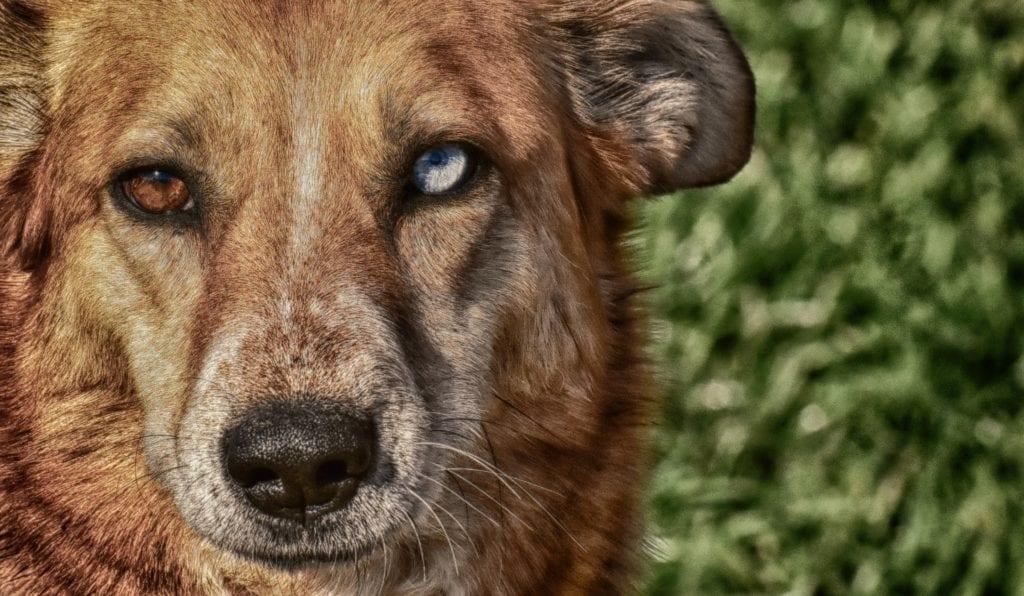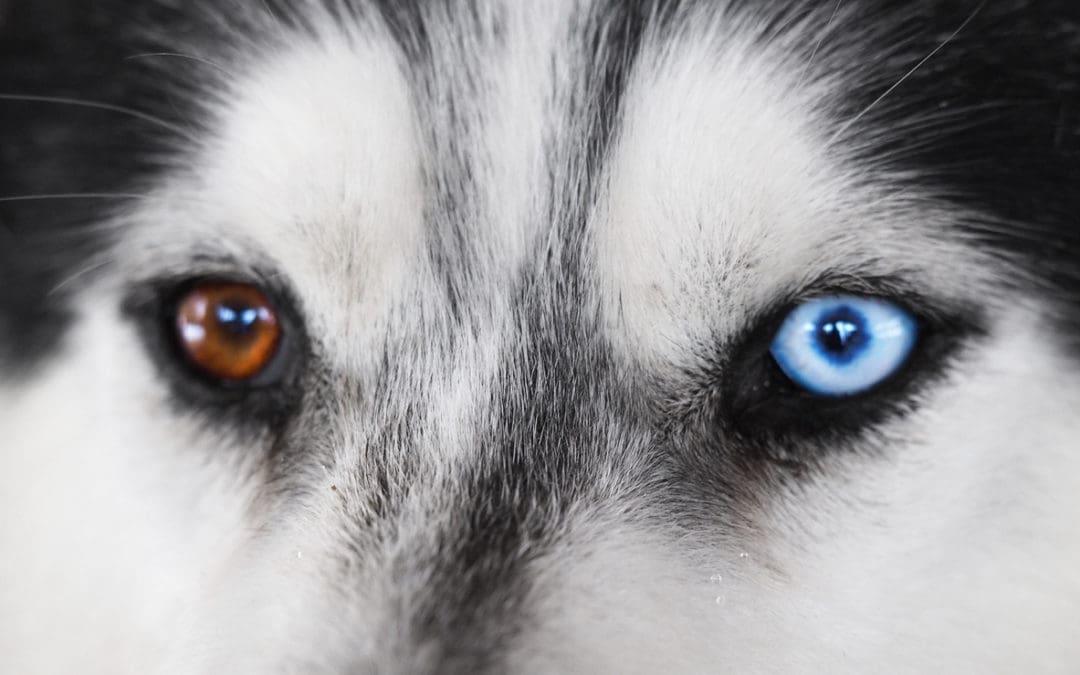Have you ever encountered a dog with strikingly different colored eyes, a captivating feature that can turn any walk in the park into a moment of awe? Known as heterochromia, this unique condition is more than just a visual marvel; it’s a fascinating intersection of genetics and biology. While many pet owners and dog enthusiasts are enchanted by this rare trait, the science behind why some dogs have two different colored eyes is equally intriguing.
In this article, we’ll explore the mechanisms that lead to heterochromia in dogs, the various breeds more likely to exhibit this characteristic, and what it all means for their health and personality. Join us as we unveil the colorful world of canine vision and the genetics that create these beautiful companions!
Table of Contents
- Understanding Heterochromia: What Causes Different Colored Eyes in Dogs
- The Role of Genetics in Eye Color Variation
- Health Considerations for Dogs with Unique Eye Colors
- Celebrating Your Dog’s Unique Look: Care and Maintenance Tips
- Q&A
- In Conclusion
Understanding Heterochromia: What Causes Different Colored Eyes in Dogs
Heterochromia in dogs occurs when one eye has a different color than the other, a striking feature that many dog owners find fascinating. This condition can arise from various factors, primarily genetic mutations. In breeds like Siberian Huskies, Australian Shepherds, and Dachshunds, heterochromia is often inherited and is linked to the specific genes responsible for coat and eye color. The most common causes include:
- Genetic Variation: Different alleles affecting melanin production can lead to eye color differences.
- Developmental Issues: In some cases, the eyes develop unevenly during gestation.
- Health Conditions: Conditions like chimerism can also result in two distinct eye colors.
Understanding the genetics behind heterochromia can help pet owners appreciate their dog’s unique appearance. The intensity and shade of each eye can vary significantly, even within a single breed. Some dogs may have one blue eye and one brown eye, while others could display hazel or green hues. To better illustrate this diversity, consider the table below showing the range of eye colors and corresponding breeds:
| Breed | Common Eye Colors |
|---|---|
| Siberian Husky | Blue, Brown, Amber, Heterochromia |
| Australian Shepherd | Blue, Brown, Marbled |
| Dachshund | Brown, Blue, Heterochromia |
The Role of Genetics in Eye Color Variation
Eye color is primarily determined by genetics, with multiple genes contributing to the rich tapestry of hues observed in both humans and animals. In dogs, the variations in eye color can be attributed to the presence of different pigments, most notably melanin. The homozygous state of the genes can lead to brown eyes, while a combination of genes can result in lighter shades, such as blue or green. This intricate genetic interplay means that a dog’s eye color is not inherited in a straightforward manner; rather, it involves the interaction of several alleles, which can create stunning contrasts, such as a dog with one brown eye and one blue eye—a condition known as heterochromia.
Furthermore, the distribution and concentration of pigments in the iris play a critical role in eye color variation. The presence of a gene called SOX2 is particularly significant, as it is linked to the development of different iris colors. In addition to genetic factors, environmental influences and mutations can also lead to unique eye color variations. This captivating mix of genetics and environmental factors contributes to the diverse spectrum of eye colors found in dog breeds, making every pup a unique canvas of genetic artistry.
Health Considerations for Dogs with Unique Eye Colors
Dogs with unique eye colors, such as heterochromia—where one eye is a different color from the other—often draw attention and admiration. However, these distinctive features can sometimes be indicators of underlying health considerations. While heterochromia itself is usually not a health concern, it can be associated with certain breeds that may have predispositions to genetic conditions. It’s essential for dog owners to be aware of these conditions, as maintaining overall eye health is crucial for the well-being of their furry companions.
Consider the following potential health implications for dogs with unique eye colors:
- Vision Issues: Some breeds may experience visual impairments linked to eye color genetics.
- Iris Anomalies: Changes in the structure or pigmentation of the iris can sometimes occur, requiring veterinary evaluation.
- Increased Sensitivity: Dogs with lighter eye colors may be more sensitive to bright lights, necessitating protective measures during outdoor activities.
- Genetic Disorders: Certain breeds with heterochromia might be prone to hereditary conditions, making regular veterinary check-ups important.
The table below summarizes breeds commonly associated with heterochromia and their potential eye health considerations:
| Breed | Health Considerations |
|---|---|
| Husky | Prone to cataracts and keratitis |
| Australian Shepherd | May develop iris coloboma |
| Bichon Frise | Possible susceptibility to vision problems |
Celebrating Your Dog’s Unique Look: Care and Maintenance Tips
To properly care for a dog with heterochromia, it’s essential to prioritize their eye health. Follow these tips for maintaining their unique look:
- Regular Vet Check-ups: Schedule eye examinations to catch any potential issues early.
- Proper Nutrition: Feed a balanced diet rich in vitamins A and C to support eye health.
- Sun Protection: Use doggie sunglasses or limit sun exposure, as certain breeds might be more sensitive to light.
- Grooming: Keep fur around the eyes trimmed to prevent irritation and maintain a clear view.
| Aspect | Importance |
|---|---|
| Genetics | Defines the likelihood of heterochromia. |
| Health Monitoring | Ensures early detection of eye-related conditions. |
| Diet | Aids in maintaining optimal vision. |
Q&A
Q: What causes a dog to have two different colored eyes?
A: The phenomenon of a dog having two different colored eyes is known as heterochromia. This condition occurs due to variations in the distribution and concentration of melanin, the pigment responsible for eye color. Factors such as genetics, breed predisposition, and sometimes certain health conditions contribute to the development of heterochromia.
Q: Is heterochromia common in all dog breeds?
A: While heterochromia can occur in any dog breed, it is more commonly seen in certain breeds like Siberian Huskies, Australian Shepherds, and Dachshunds. These breeds have genetic traits that increase the likelihood of eye color variation.
Q: Are dogs with two different colored eyes any different in terms of health or behavior?
A: Generally, having two different colored eyes does not affect a dog’s health or behavior. Heterochromia is primarily a cosmetic variation and is not indicative of any underlying health issues. However, it’s always a good idea to have regular veterinary check-ups to ensure your dog is healthy overall.
Q: Can a dog’s eye color change over time?
A: Yes, puppy eye colors can change as they mature. Many puppies are born with blue eyes, which may change to their adult color, which can be brown, amber, or even remain blue. In some cases, a dog may develop heterochromia later in life due to certain conditions or injuries, but this is less common.
Q: Should I be concerned if my dog suddenly develops heterochromia?
A: If your dog suddenly develops heterochromia or if there are accompanying signs like redness, swelling, or changes in vision, it’s advisable to consult your veterinarian. Sudden changes in eye color can sometimes indicate underlying health issues that may require attention.
Q: How can I care for a dog with heterochromia?
A: Caring for a dog with heterochromia is similar to caring for any dog. Regular veterinary check-ups, a balanced diet, exercise, and mental stimulation are essential. It’s also important to keep an eye on their eyes for any changes or signs of irritation, as with any dog.
Q: Are there any myths about dogs with two different colored eyes?
A: Yes, there are several myths, such as the belief that dogs with heterochromia are more prone to certain behavioral problems or that they possess special abilities. In reality, these dogs are just as normal as those with the same colored eyes, and there’s no scientific evidence to support these myths.
Q: Can I adopt a dog with heterochromia?
A: Absolutely! Adopting a dog with heterochromia can be a rewarding experience. Just like any other dog, they bring unique personalities and companionship. Make sure to consider their needs, temperament, and lifestyle compatibility when choosing a pet.
—
Q: How does owning a dog with heterochromia change my experience as an owner?
A: Owning a dog with heterochromia can be a visually striking and unique experience! Many owners find that these dogs receive a lot of attention and compliments. However, they remain just like any other dog in terms of care and affection – they need love, attention, and a good home. Enjoy the special bond you’ll share, regardless of their eye color!
In Conclusion
the captivating phenomenon of dogs with two different colored eyes, known as heterochromia, is a fascinating blend of genetics and biology. As we’ve explored, this striking trait not only enhances the unique beauty of our canine companions but also serves as a window into the complex world of inherited characteristics. From the varying combinations of melanin to the influence of breed and environmental factors, the science behind heterochromia reveals just one of the many wonders that make dogs so special.
So, the next time you encounter a dog with mismatched eyes, take a moment to appreciate this extraordinary trait and the science behind it. Whether it’s a playful pup at the park or a loyal companion at home, every dog tells a story—one that beautifully intertwines nature and nurture. We hope this exploration has deepened your appreciation for our furry friends and the remarkable diversity they bring to our lives. Share your newfound knowledge with fellow dog lovers, and continue to celebrate the uniqueness of your own four-legged family members!

















